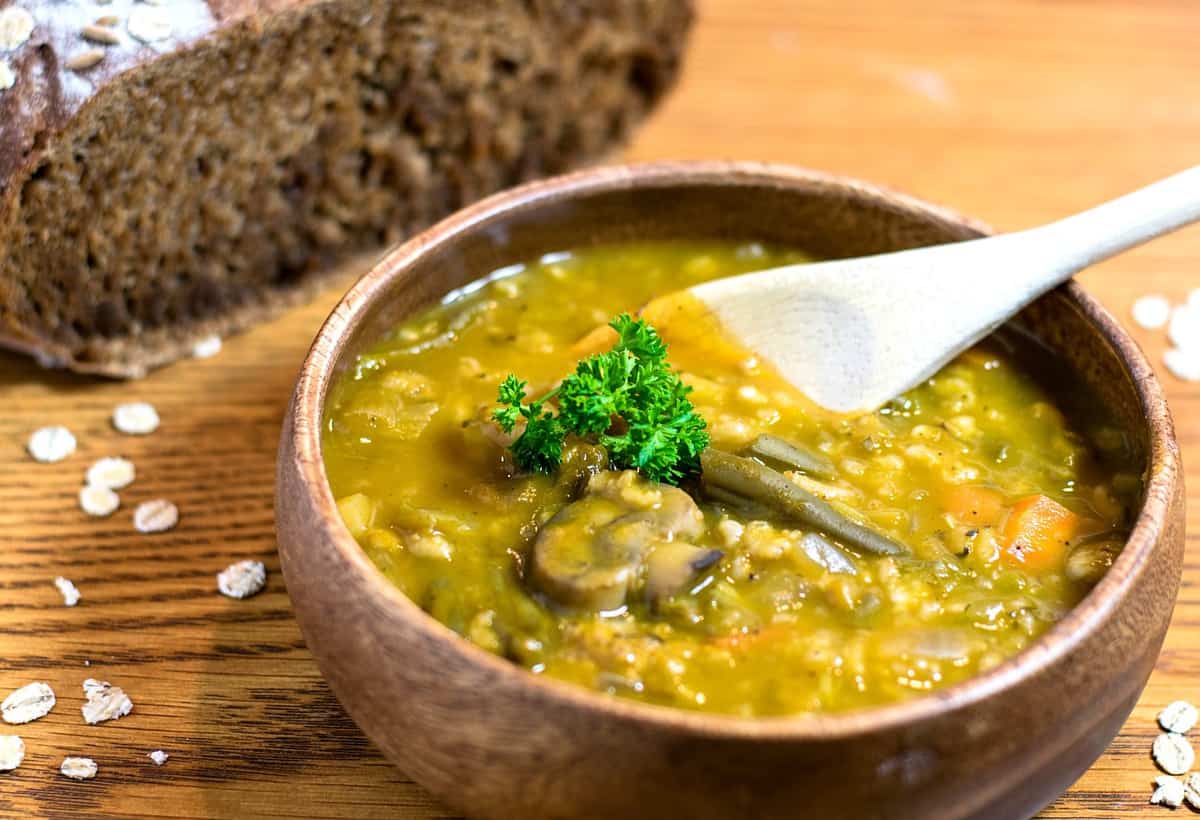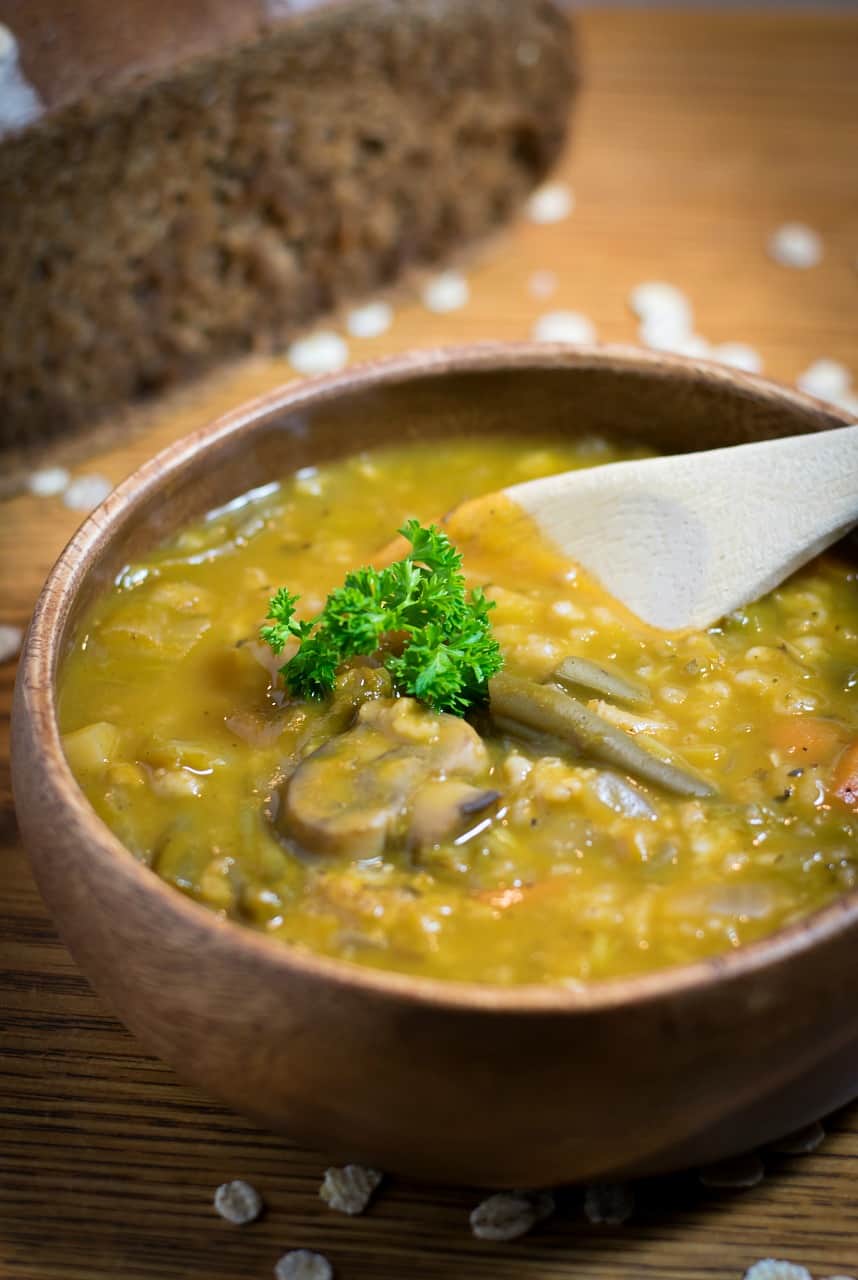Medieval Pottage Stew
This Medieval Pottage Stew is merely an additional title for a thick, rich, soup frequently made by Peasants in the course of the Middle Ages. Since peasants have been bad, and couldn’t afford meat, they utilized whatever veggies and grains they could expand to make this soup, usually served with a dark, crusty loaf of bread.
So why the sudden appear into Medieval eating habits?
Have you ever genuinely imagined about the Middle Ages? It’s truly sort of ironic when you examine it to nowadays.
The wealthy could afford all varieties of meat, anytime they wished it, along with the best wine, ale, a variety of cheeses, and even the lighter, tastier, loaves of wheat bread. And greens? They were regarded as peasant foods, absolutely not to be trusted.
Meanwhile, the lowly peasants scrounged for every last crumb they could discover. They worked from sunup to sundown, burning close to four,000 calories a day, managing the king’s land in exchange for a small plot to increase their personal barley and rye. The wives and daughters managed the gardens and possibly a stray animal or two in hopes of a handful of eggs, or a small milk to make their very own cheese.
Their diet program was predominantly vegetarian with the bulk of their calories coming from their dark, dense, loves of barley bread, or rye. There were no potatoes or tomatoes yet, so their principal vegetable crops were turnips, parsnips, leeks, onions, and cabbage.
They would chop all these veggies into a massive cauldron and boil them in no matter what broth they could make from stray bones and vegetable scraps. The stew would then be thickened by incorporating oats or barley, and spiced with no matter what herbs grew in their garden.
This Medieval Pottage Stew, along with their bread would be their primary meal, along with cheese if they could afford it.
And who do you consider was more healthy? The poor scrawny peasants? Or the rich and wealthy lords and kings?
You guessed it.
The wealthy are typically depicted in paintings and drawings as becoming OBESE. King Henry VIII was said to have been so massive they required a hoist just to get him on his horse. He suffered from gout, leg ulcers, diabetes, and weighed about 400lbs when he died at the ripe previous age of fifty five.
The peasants predominantly lived on a High CARB diet plan, although the wealthy predominantly lived on a Large PROTEIN, Substantial Fat diet.
Sound acquainted?
Several of us these days really ARE eating like the Kings and Queens of previous, and suffering the very same illnesses they did.
Take a note – eat like a peasant.
 
Medieval Pottage Stew

Medieval Pottage Stew | Brand New Vegan
So with all that in thoughts, I wished to try and recreate a normal meal that a Medieval Peasant may possibly have manufactured.
So get out your cauldron and let’s get started.
- In a huge stew pot, add 1 cup of diced carrots, one cup of diced parsnips, one cup of diced onion, and one cup of diced turnips.
- Sweat the veggies using about ¼ cup of minimal sodium veggie broth
- After ten-15 minutes, add one cup diced leeks, one cup sliced mushrooms, one cup fresh green beans (or use a 15oz can, rinsed and drained), and one-2 cups of chopped cabbage (I used Napa).
- Allow that simmer for a handful of minutes and then add 2 quarts of lower sodium veggie broth.
- Season with one big bay leaf, ½ tsp dried thyme, ½ dried rosemary, ½ tsp rubbed sage, ½ ground pepper, and ¾ tsp salt.
- Stir in ½ cup of red wine. (it could or may possibly not be correct to what a peasant might use – but it does add a good taste)
- Carry the soup to a boil, and then reduced the heat to Low and cover.
- Let simmer for 30 minutes.
- Stir in 1 cup rolled oats (or use ½ cup rolled oats and ½ barley flakes – obtainable at Whole Meals)
- Continue simmering for yet another twenty-30 minutes, or until grains are cooked.
- Add any extra seasoning if desired, one Tbs of balsamic vinegar, and take away bay leaf ahead of serving.
- Pairs well with a good, crusty loaf of Rustic Bread.
 
I am still tweaking the Bread Recipe I used. I used a combination of Bread Flour, Entire Wheat Flour, Rye Flour, and Molasses and then sprinkled Barley Flakes and Rye Seeds on it ahead of baking. It was’t poor, but the crumb still requirements some operate.
This stew is practically chok-Full of the very good stuff.
If you try out it I’d adore your trustworthy opinion. This recipe DOES make a good deal but I’m confident it can very easily be frozen for later on. Keep those comments coming and remember….
Eat LIKE A PEASANT !!
 
 
 
 
Medieval Pottage Stew
This Medieval Pottage Stew is basically one more identify for a thick, wealthy, soup typically manufactured by Peasants during the Middle Ages, chock-complete of veggies and grains .
- one cup carrots (diced)
- one cup parsnips (diced)
- one cup onions (diced)
- one cup turnips (diced)
- one cup mushrooms (sliced)
- one cup leeks (diced)
- one cup cabbage (chopped)
- 1 cup green beans (chopped)
- 2 qts vegetable broth (reduced sodium)
- one bay leaf
- 1/two tsp rubbed sage
- one/2 tsp dried thyme
- one/two tsp dried rosemary
- 1/two tsp black pepper
- three/4 tsp salt
- 1/two cup red wine
- one Tbs balsamic vinegar
- one/two cup rolled oats
- one/2 cup barley flakes
-
Peel and chop all veggies
-
Include carrots, parsnips, onions, and turnips to a large stew pot with about 1/4 cup veg broth 
-
Saute for ten minutes or till softened 
-
Add mushrooms, leeks, cabbage, and beans and simmer for an further five minutes
-
Add broth, seasoning, and wine and stir effectively
-
Deliver to a boil, lower heat, and cover.  Simmer for 30 minutes.  
-
Stir in barley and oats and continue simmering, uncovered, for an further twenty minutes or right up until grains are cooked
-
Stir in vinegar, eliminate bay leaf, alter seasonings, and serve
 
 
 
The publish Medieval Pottage Stew appeared first on Brand New Vegan.
Read More About Gluten-Free Recipes At NaturallyCurvy.com



0 comments: